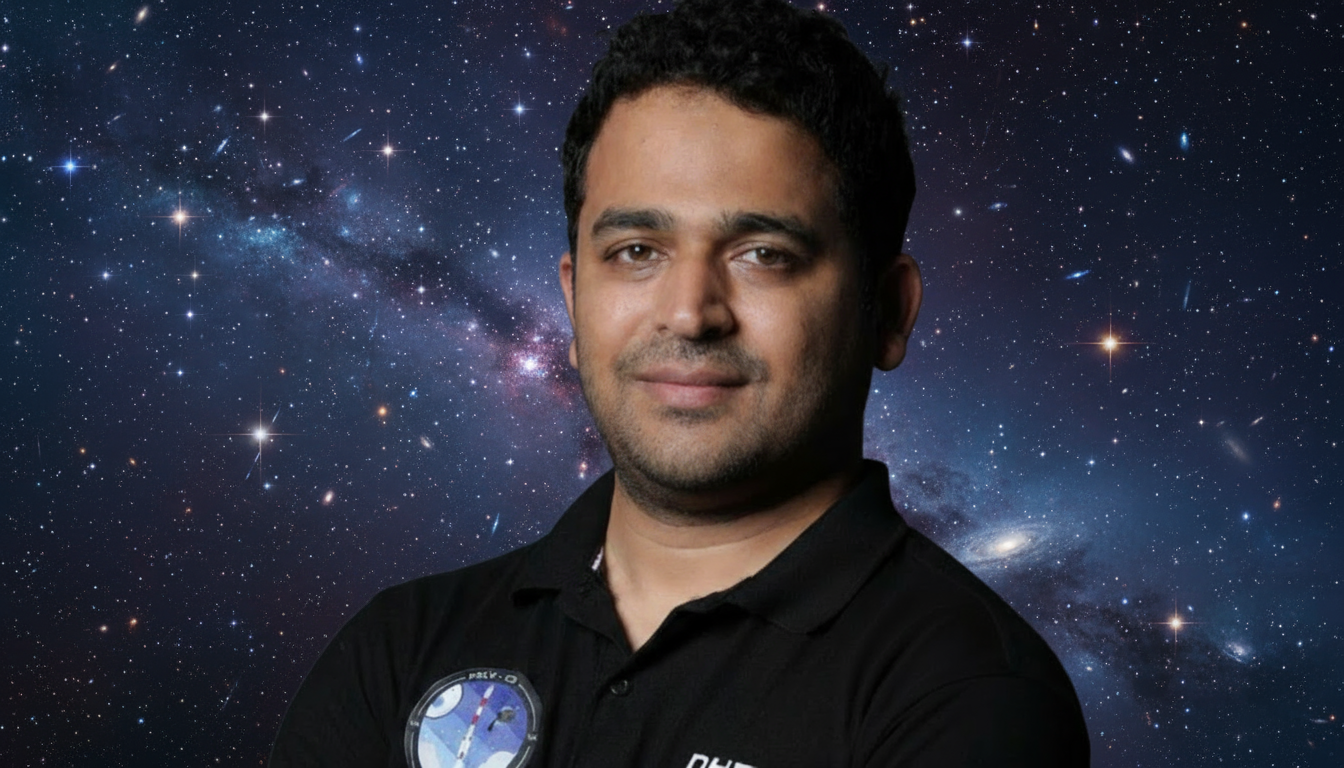Dhruva Space, a Hyderabad-based spacetech startup founded by Sanjay Nekkanti, is preparing to launch one of India’s largest satellite mass production facilities. Spanning 280,000 sq. ft., the upcoming site will accelerate assembly, integration, and testing of satellites up to 500 kg in class. Alongside innovations such as the Solis+ rollable solar array and partnerships across India, France, and Australia, Dhruva is expanding its presence in the global space ecosystem.
From Early Ambitions to a National Leader
When Sanjay Nekkanti first began building satellites at age 19, India’s private space sector was virtually nonexistent. “There were hundreds of millions of people, and yet, no one was building private satellite companies. For me, that was motivation to take the road less travelled,” recalls Nekkanti.
Today, as founder and CEO of Dhruva Space, he is leading a company that is vertically integrated across space, launch, and ground segments. With a new large-scale production facility underway in Telangana, Dhruva is positioning itself as a cornerstone of India’s growing private space ecosystem.
A Facility to Power the Future
The upcoming 280,000 sq. ft. facility is designed for mass satellite production. It will handle assembly, integration, and testing, and will support satellites of up to 500 kg in class. This makes it one of the largest such facilities in India.
Although Dhruva Space is vertically integrated, it collaborates with over 500 vendors, and this facility will complement their contributions by speeding up production timelines.
Funding support comes from a mix of government programmes, venture capital, and institutional investments, all of which are increasingly active in India’s space technology sector.
Growth and Partnerships
Founded in 2012 by Nekkanti along with Chaitanya Dora Surapureddy, Abhay Egoor, and Krishna Teja Penamakuru, Dhruva Space began with small satellites, CubeSat buses, and orbital deployers. Since then, its portfolio has expanded to include:
- Satellite platforms (P-DoT, P-30, P-Nu)
- DSOD orbital deployers
- DSOL communication systems
- Launch and mission integration services
- Ground-as-a-service offerings
- Commercial imagery and analytics
The company has forged partnerships with Kinéis and Comat in France, SatSure in India, and Australian firms Akula Tech and Esper Satellites for its upcoming LEAP-1 mission. Dhruva also continues to collaborate closely with ISRO, leveraging PSLV launches.
Vertical Integration Advantage
What sets Dhruva apart is its vertical integration across spacecraft design, launch services, and ground systems. This model reduces turnaround time, improves efficiency, and gives clients a complete end-to-end solution.
“As satellite missions grow from dozens to thousands, stitching together the three pillars of space, launch, and ground became necessary. That’s the beauty of vertical integration,” Nekkanti explains.
The new facility is a crucial part of this model, giving Dhruva the ability to serve rising demand for Earth observation, communications, and defence missions.
Innovation Spotlight: Solis+ Solar Arrays
One of Dhruva’s most exciting technologies is the Solis+ solar array. Unlike traditional panels, Solis+ offers rollable arrays that improve packing efficiency and reduce launch weight—critical for missions carrying high-power payloads.
“Imagine a football-field-sized solar panel in space. It can’t just deploy as a solid structure—that’s why we’re building rollable panels,” Nekkanti says.
This innovation enables more scalable power deployment, making satellites more capable across diverse mission profiles.
Scaling Up and Looking Ahead
Dhruva Space is expanding its capabilities to support 500 kg-class satellites, moving beyond its earlier focus on CubeSats and smaller payloads. While the company does not yet work on human spaceflight, Nekkanti affirms that it hopes to play a role in future Indian human space exploration missions.
The company is also broadening its international reach, with export wins in Australia, the UAE, and Europe. A collaboration with French firm Sodern will see one of its payloads launched aboard a Dhruva-built satellite in 2026.
Beyond manufacturing, Dhruva is exploring AI, quantum technology, and advanced manufacturing to improve both satellite and ground services. Nekkanti believes space technology fosters cross-pollination, opening doors for AI-driven efficiency and innovation in orbit.
“Space is limited only by how we choose to explore it. Dhruva has built technologies that can power a range of applications. The future is bright,” Nekkanti says.
Conclusion
With its satellite mass production facility, Solis+ solar arrays, and expanding international partnerships, Dhruva Space is positioning itself as one of India’s leading space companies. By combining vertical integration with bold innovation, the company is not only accelerating domestic space access but also extending India’s role in the global space economy.
Disclaimer
This article is based on information originally published by YourStory. All rights and credits for the original reporting belong to YourStory and the respective author. The content here has been adapted for informational purposes.




